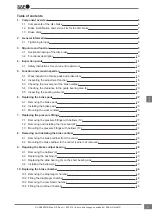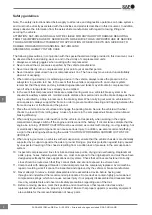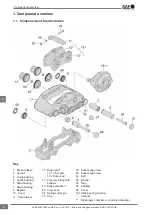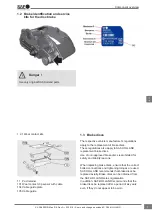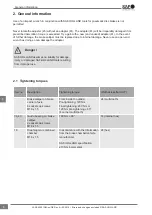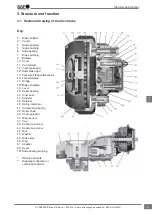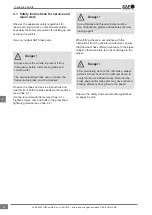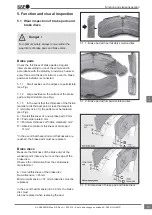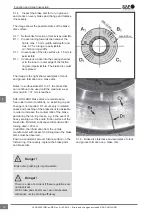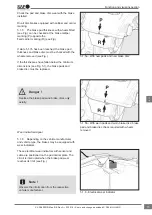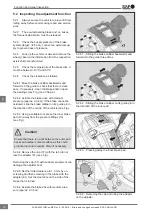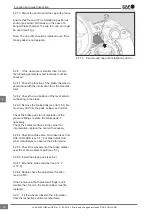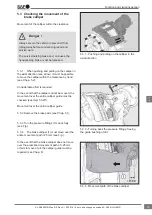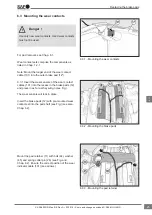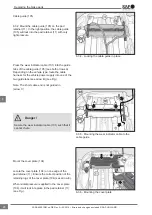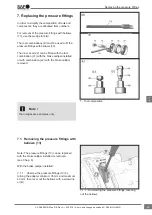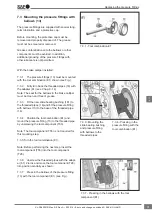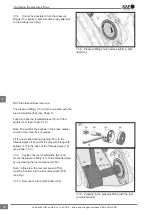
5.2.6.7 Measure the distance between the pad
backs and the pressure fitting (13).
Due to possible bridge tipping, this must be
measured with two gauges at the same time over
the entire surface of the pressure fitting and over
both pressure fittings (use 220 mm long feeler
gauges) (see Fig.).
If the clearance difference between the two
pressure fittings is >0.25 mm, the clearance of the
calliper guide must be checked for wear (see 5.3)!
In addition, the clearance at both pressure fittings
must be 0.6 - 1.2 mm.
If the clearance is too large, braking efficiency
may impaired. If the clearance is too small, the
brake may overheat and cause further damage.
Danger !
5.2.7 If the clearance is greater than 1.2 mm, the
adjustment function must be checked as follows:
5.2.7.1 Rotate the adjuster with the adapter (61)
three clicks in an anti-clockwise direction (increas-
ing clearance).
5.2.7.2 Fit the ring spanner or socket to the adapter.
Actuate the brake 5 to 10 times (approx. 2 bar). In
the event of a functional adjustment, rotate the ring
spanner or socket cyclically in the direction of the
arrow (see Fig. and note below).
Note: As the cycle rate increases, the twisting angle or
movement of the ring spanner or socket decreases.
If the ring spanner or socket fails to rotate, does
so only on the first actuation or every actuation
backwards and forwards, the adjuster is faulty and
the brake calliper must be replaced.
5.2.6.7 - Measuring the distance between the pad
backs and pressure fitting
5.2.7.1 - Rotating the adjuster with the adapter
three clicks in an anti-clockwise direction
5.2.7.2 - Actuating the brake 5 to 10 times, the ring
spanner or socket must rotate cyclically
Ensure that the ring spanner can rotate freely
in a clockwise direction whilst carrying out the
following procedure.
Note !
Function and visual inspection
17
en
XL-SA40001RM-en-DE Rev A • 02.2016 • Errors and changes excluded © SAF-HOLLAND

